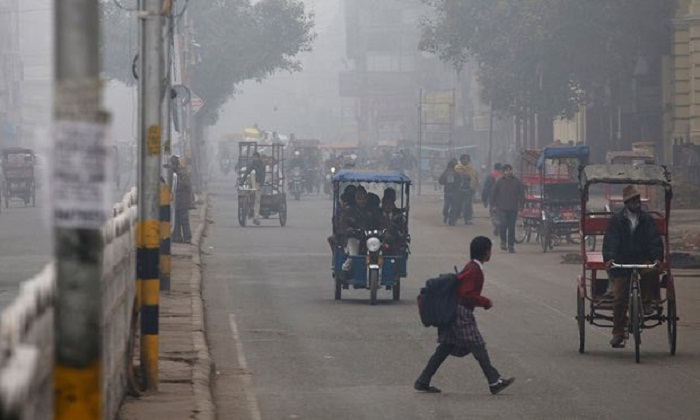All north Indian cities fail to meet air quality standards, report finds

It adds to a growing body of research showing the problem of toxic air is not limited only to the Indian capital, Delhi, but afflicts almost all the country’s large cities, particularly in the north.
Air quality data gathered for 2015 from state pollution control boards and under freedom of information laws showed “there are virtually no places in India complying with World Health Organisation and national ambient air quality (NAAQ) standards, and most cities are critically polluted”, the report said.
“Except for a few places in southern India which complied with NAAQ standards, the entire country is experiencing a public health crisis due to high air pollution levels.”
The report added that “deaths due to air pollution are only a fraction less than the number of deaths caused by tobacco usage”, citing the Lancet’s global burden of disease study, which shows about 3,283 Indians die each day due to exposure to outdoor air pollution.
In all of the 20 cities monitored in the state of Uttar Pradesh, the level of PM10 – airborne pollutants such as dust, mould and chemical droplets less than 10 micrometers in diameter – exceeded international limits by at least 100%.
Ghaziabad, an Uttar Pradesh city that borders Delhi, exceeded the limits by more than 400%, the report showed.
But the PM10 limits were also exceeded in cities where the problem is less publicised, such as Hyderabad, Pune and Thane, where pollution density was about twice the safe level.
Cities in the south-western state of Karnataka generally enjoyed good air quality, with 12 of the 21 places with monitoring stations, including Mangalore and Mysore, recording PM10 levels well below the safe annual average limit of 60 micrograms.
Delhi’s average level of PM2.5, the smallest and most harmful pollutants, was 128 micrograms in 2015 compared with 81 micrograms in Beijing that year.
Poor air quality is the result of several factors including road dust, open fires, vehicle exhaust fumes, industrial emissions and the burning of crop residue.
This week, Delhi’s high court directed administrators in Punjab, an agricultural northern state where crop burning each October sends torrents of smog billowing across north India, to cease the practice from this year.
“We are of the view that the air quality of Delhi and nearby states is already deteriorating day by day and has attained alarming proportions,” the court said on Thursday.
India’s supreme court has also banned fireworks from Delhi after last year’s Diwali festival caused levels of some pollutants to reach 42 times the safe limit and forced the closure of schools, construction sites and a coal-fired power station.
/The Guardian/















































